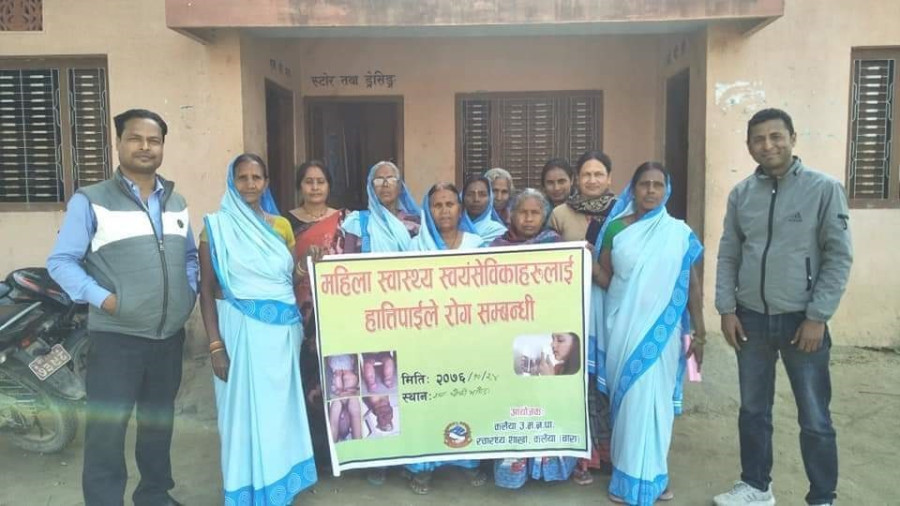Madhesh Province
Elephantiasis still a major health challenge in Bara district
The government has been launching mass drug administration programme to reduce the number of elephantiasis patients in the affected districts.
Laxmi Sah
The control of Lymphatic Filariasis, commonly known as elephantiasis, has been a major health challenge in Bara district. The authorities concerned have been struggling to control the disease for the past six years, but a large number of people are still found suffering from it.
According to Shankar Prasad Gupta, district coordinator of the division responsible for controlling the spread of the disease, there are at present more than 1,200 elephantiasis patients in the district.
“The drug administration and awareness programmes launched to control the disease have not been effective. The negligence of the health workers and a lack of public health awareness are the main reasons behind the failure of the drive,” said Gupta. According to him, health workers are not working diligently to administer the drugs and to launch awareness campaigns to control the disease in the district’s rural areas.
The government on February 8 had launched a mass drug administration programme in Bara. This is the third time the government ran the programme in the district in the past six years.
“Cases of elephantiasis are still alarmingly high in the district. We plan to continue the programme until the number of patients is reduced below 20,” said Gupta.
Elephantiasis is caused by small, threadlike parasitic worms spread by Culex female mosquitoes. These worms prosper in the human lymphatic system and cause the swelling of arms, legs, head, genitals or breasts.
The government has been launching mass drug administration programmes in the affected districts to reduce the number of elephantiasis patients. According to the Epidemiology and Disease Control Division under the Ministry of Health and Population, the ministry is launching a campaign to administer Diethy-lcarbamasine and Albe-ndazole tablets to counter the disease.
A health study conducted in 2003 shows that around 13 percent of the total population in 61 districts are affected by the disease.
According to the World Health Organisation, an area is said to free from elephantiasis when the number of infected reaches below one percent. The organisation says that elephantiasis has affected 40 million people in 83 countries.
“As per the standards set by the WHO, Bara district has so far been unsuccessful in controlling the disease. That’s why we decided to launch the drug administration programme in the district again,” said Bijaya Kumar Jha, a senior public health administrator at the Provincial Health Directorate.
According to Jha, people are reluctant to take the drug fearing further health complications.
“Everybody should take the drug to eliminate the risk of contracting elephantiasis. However, it’s hard to convince people about the advantages of taking the drug,” said Jha.
However, the drug should not be administered to patients of chronic diseases such as cancer, high blood pressure; ailments related to heart, lungs and liver; postpartum mothers of less than a week and children below the age of five and those suffering from severe malnutrition.




 26.12°C Kathmandu
26.12°C Kathmandu















